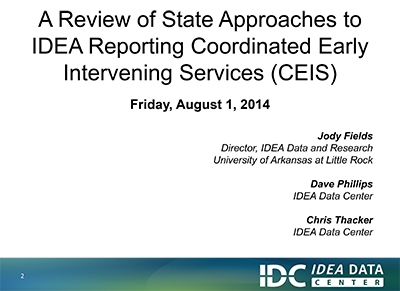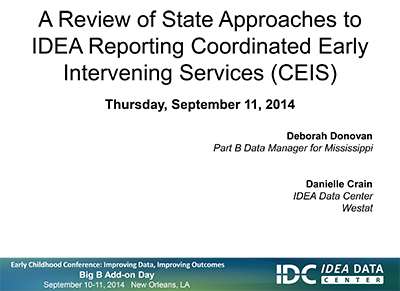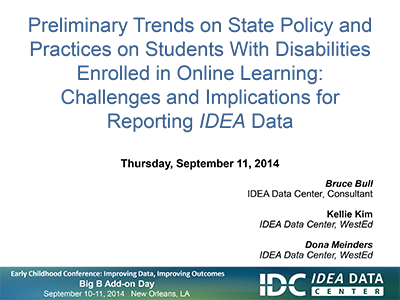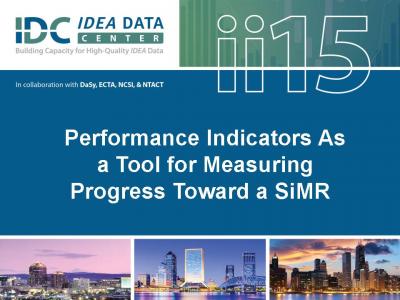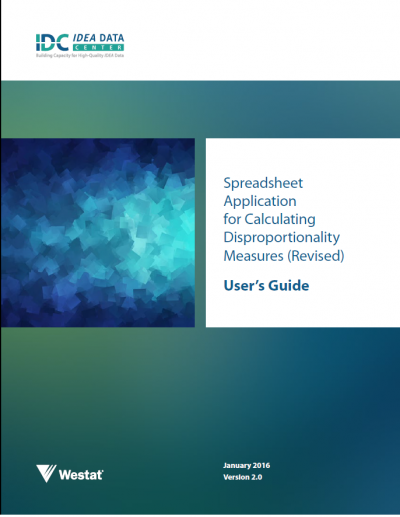Site Search
Results 29 - 35 of 150
Format: Checklists, Crosswalks, and Rubrics
FERPA Exceptions SummaryA privacy and data protection program for student education records must include a set of checks and balances to ensure that the necessary rules and procedures are in place and that they are being fully implemented. This document provides information about how to complete formal periodic audits of the various processes involved in the processing and usage of personally identifiable student information.
Format: Presentations
Collaborative Partnerships Between State Special Education Data Managers and EDFacts Coordinators: Two Models-Working Together to Make a DifferenceThe presentation outlined the collaborative partnerships between the Part B data manager and EDFacts coordinator in two states--West Virginia and Kansas. The discussion included a range of topics from collaborating on data collection and verification at the LEA level to SEA EDFacts submissions. The presentation included time for other Part B data managers to share strategies for successful submission of their 618 data through EDFacts.
Format: Presentations
A Review of State Approaches to IDEA Reporting Coordinated Early Intervening Service (CEIS)IDEA allows, and sometimes requires, LEAs to use funds provided under Part B of IDEA for CEIS for students who are not receiving special education services. There are multiple data collection and reporting requirements associated with the use of these funds for CEIS. IDC staff review how a diverse subset of states and their LEAs are working to meet those requirements. Both aggregate and student-level reporting approaches are reviewed.
Format: Presentations
A Review of State Approaches to IDEA Reporting of Coordinated Early Intervening Services (CEIS)IDEA allows, and sometimes requires, LEAs to use funds provided under IDEA Part B for CEIS students not identified for and receiving special education and related services. There are multiple data collection and reporting requirements associated with use of these funds for CEIS. IDC staff reviewed and led a discussion on how a diverse subset of states and their LEAs are working to meet those requirements.
Format: Presentations
Preliminary Trends on State Policy and Practices on Students With Disabilities Enrolled in Online Courses: Challenges and Implications for ReportingParticipants engaged in focused discussions with members of IDC's Workgroup on Educational Environments - Online Learning. Workgroup members presented a snapshot of policies on online learning. They also presented a preliminary analysis on data collection and reporting practices in relation to IDEA educational environments from states reporting students with disabilities enrolled in online learning courses. Participants engaged in an interactive discussion on similarities, differences, and needs of practices within their own states.
Format: Presentations
Performance Indicators As a Tool for Measuring Progress Toward a SiMRThis presentation provides guidance on the evaluation of SSIP by differentiating between evaluating implementation and impact and reviews possible measures of progress toward achieving the SIMR. Participants discussed and provided input into development of an IDC white paper on the topic. Currently, the white paper is in draft form and undergoing revisions based on input from the field. The published paper will be posted to the IDC Resource Library and affiliated as a related resource to the handout already posted for this session.
Format: Applications and Spreadsheets
Spreadsheet Application for Calculating Disproportionality Measures and User’s Guide: Spreadsheet Application for Calculating Disproportionality Measures (Revised)States can use the Excel spreadsheet application for calculating disproportionality measures and accompanying user's guide in their assessment of racial/ethnic disproportionality. The spreadsheet application calculates several disproportionality measures and the User’s Guide provides instructions for using the spreadsheet application.
Please note this resource is currently not 508 accessible. If you need assistance with the use of this resource, please contact us at www.ideadata.org.



